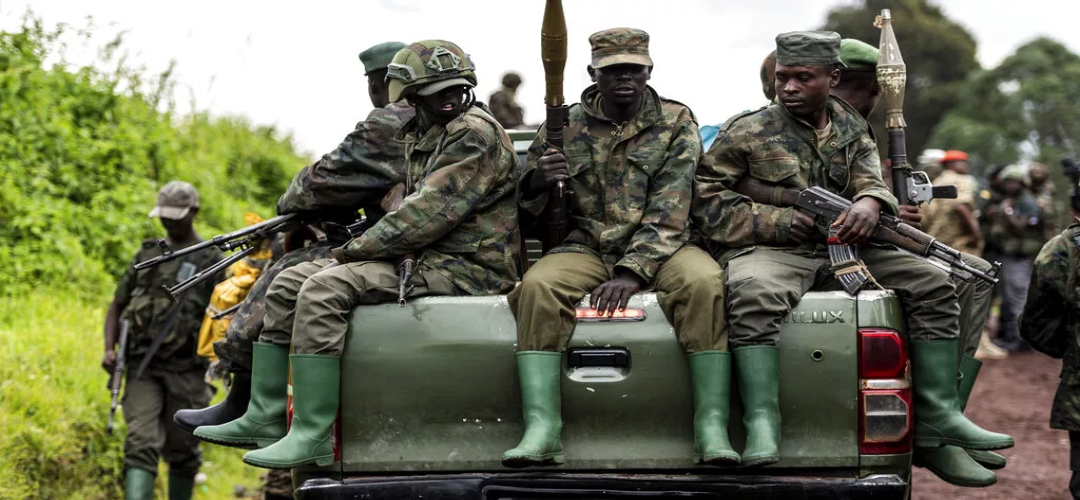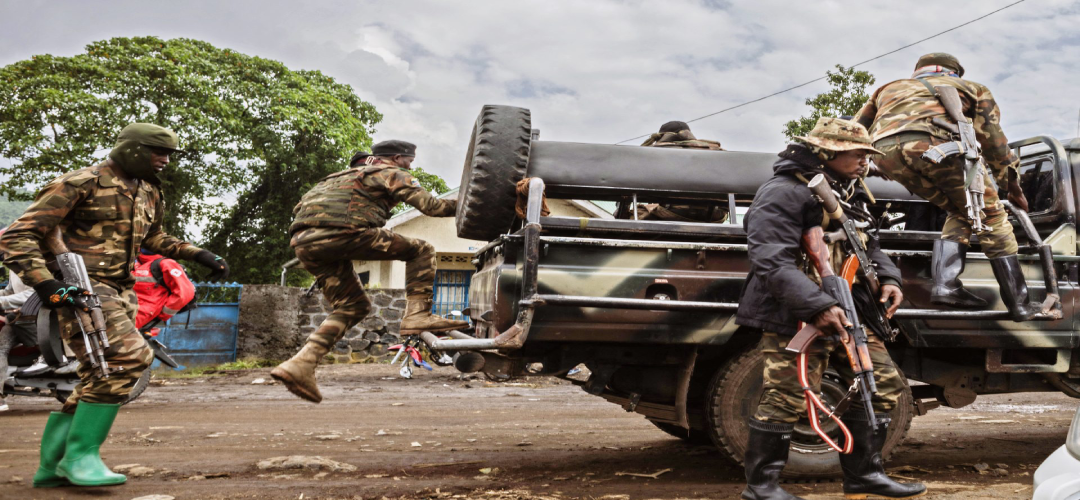Rwanda Vs. Drc: Will It Be War?
March 3, 2024 | Expert Insights

Tensions seem to be reaching a boiling point as Rwanda continues to back a Tutsi insurgency gaining impetus in the DRC.
Escalating tensions in Central Africa between Rwanda, a small, landlocked but populous country and its much larger neighbour, the Democratic Republic of Congo (DRC), risk setting off a regional war.
Growing clashes between the DRC army and the Rwandan-backed Tutsi-led rebels in eastern DRC have taken numerous lives and displaced hundreds and thousands. The fighting continues a decades-long saga that seems to be reaching a boiling point.
Background
The Tutsi-led insurgents in eastern DRC are the latest in a series of Tutsi-led groups to rebel against the DRC state. They are referred to as the M-23 rebels because March 23, 2009, was when an accord was signed to end a former Tutsi revolt in eastern DRC.
However, the group protests that the DRC government has not fulfilled its part of the peace deal to integrate Congo’s Tutsis into the army and administration. Moreover, it accuses the DRC army of supporting a leading Hutu militia, the Democratic Forces for the Liberation of Rwanda (FDLR), which includes members accused of the 1994 Rwandan genocide.
Tutsi interests are a historically sensitive point in the area, particularly vis-a-vis the other ethnic group the Hutus, who have set up militias in the country. The Hutus fled from Rwanda to DRC after taking part in the brutal 1994 genocide of more than 800,000 Tutsis in Rwanda. The M-23 claims it wants to protect Tutsis against Hutu militia like the FDLR.
The DRC blames Rwanda for reviving and arming the recent M-23 insurgency. A Group of Experts of the United Nations Security Council (UNSC) had earlier pointed to Rwanda’s support for the M23.
In a former insurgency in 2012 and 2013, M23 seized control of vast swathes of eastern DRC and entered Goma, a strategic and economical central zone. Similar attacks and seizures took place in 2022, which the group claimed was to defend against attacks by the FDLR, collaborating with the DRC army.
Rwanda points to national security concerns vis-a-vis the DRC. It also criticizes the DRC’s decision to shut out the regional peacekeeping troops such as those from Kenya, which DRC claims were ineffective. Rwanda and Uganda have organized military interventions in the DRC in the past such as in 1996 and 1998 when they invaded the country, claiming that they were defending themselves against militias. However, many point to their bid to secure influence in the mineral-rich region.

Analysis
DRC’s volatile, mineral-rich east has more than 100 armed groups including M23, fighting for control. The extent of violence has magnified since the M23’s resurgence in 2021.
In February, DRC troops exchanged fire with Rwandan army members in a border zone amidst fears of a regional war that could draw in Burundi, Uganda, Tanzania, Malawi, and regional forces.
The United States has issued a sharp warning to Rwanda and DRC to “walk back from the brink of war” after Rwanda rejected the US’ exhortation to withdraw its troops and surface-to-air missile systems from DRC. Rwanda has pointed to the DRC’s military build-up near the border and the threats posed by the FDLR.
M23’s sudden revival is also linked to economic interests. While Rwanda and Uganda mention security interests, major economic interests in the lucrative mining belt cannot be ignored. It is home to some of the biggest deposits of coltan, an input in most electronic devices. It is also rich in cobalt, an ingredient in electric car batteries, now in high demand.
According to the Africa Center for Strategic Studies, it is likely that rebel groups like M23 control supply chains running from mines into Uganda and Rwanda. Violence is a corollary as groups vie for control of mines and transport routes.
The Kenyan government has actively vouched for de-escalating by deploying a multinational East African Community force. However, in the context of Congo’s fractious relations with its neighbours, the force would have to exclude states that have played a role in invading and occupying parts of the DRC.
The present conflict is exacerbated by the DRC leadership - President Felix Tshisekedi has ramped up anti-Rwanda rhetoric and even mentioned declaring war on Rwanda as he campaigned to be re-elected for a second term and succeeded in winning the election at the end of 2023. While this may have been an electoral tactic, it could also reflect his combative approach that is tapping into deteriorating ties between the two nations.
Assessment
- Fractious ties between the leadership of Rwanda and DRC inflame an already tense and strife-ridden situation.
- As the M23 closes in on Goma and Rwanda openly refuses to withdraw its contribution, matters may reach a head between the two states.








Comments